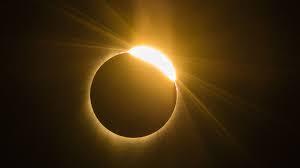On Monday, April 8, the sky will momentarily darken for millions of Americans in the path of totality during the 2024 solar eclipse.
This is the first solar eclipse to pass through North America in seven years, and the next one will not be seen from the contiguous U.S. until Aug. 23, 2044, according to NASA.
The exact time the solar eclipse will occur will vary, depending on the state and the time zone. And of course, eclipse visibility will also be dependent on Monday’s weather.
Whether you’re experiencing the path of totality from home or traveling to witness it in person, here’s what to expect for the exact eclipse time.
What time is the 2024 solar eclipse?
The eclipse will begin in Mexico at about 11:07 a.m. PDT, Monday, April 8 before crossing into Texas at 1:27 p.m. CDT. It will end in Maine at 3:35 p.m. EDT. Even if you’re not in the path of totality and won’t see the full eclipse, you may still see a percentage of it.
To find out exactly when the eclipse will be happening in your area, you can search by USA TODAY’s database by zip code for a viewing guide.
Even if you still see a fraction of the eclipse, you can use the database to search the time, duration, peak and percentage in your area.
Here are the major cities in each state where you can expect to experience totality in the United States (note that the included times do not account for when the partial eclipse begins and ends):
- Dallas, Texas: 1:40-1:44 p.m. CDT
- Idabel, Oklahoma: 1:45-1:49 p.m. CDT
- Little Rock, Arkansas: 1:51-1:54 p.m. CDT
- Poplar Bluff, Missouri: 1:56-2:00 p.m. CDT
- Paducah, Kentucky: 2-2:02 p.m. CDT
- Carbondale, Illinois: 1:59-2:03 p.m. CDT
- Evansville, Indiana: 2:02-2:05 p.m. CDT
- Cleveland, Ohio: 3:13-3:17 p.m. EDT
- Erie, Pennsylvania: 3:16-3:20 p.m. EDT
- Buffalo, New York: 3:18-3:22 p.m. EDT
- Burlington, Vermont: 3:26-3:29 p.m. EDT
- Lancaster, New Hampshire: 3:27-3:30 p.m. EDT
- Caribou, Maine: 3:32-3:34 p.m. EDT
What is the path of the 2024 solar eclipse?
The eclipse begins in Mexico, and then crosses over into the U.S. through Texas. From there, the path of totality, which is approximately 115 miles wide, extends northeast, crossing through 13 states. In the U.S., totality will end in Maine, but the eclipse will eventually enter the maritime provinces of Canada.
Other major cities along the eclipse’s path of totality include San Antonio and Austin, Texas; Indianapolis; and Rochester and Syracuse, New York.
Contributing: Eric Lagatta, Ramon Padilla and Karina Zaiets, USA TODAY.



